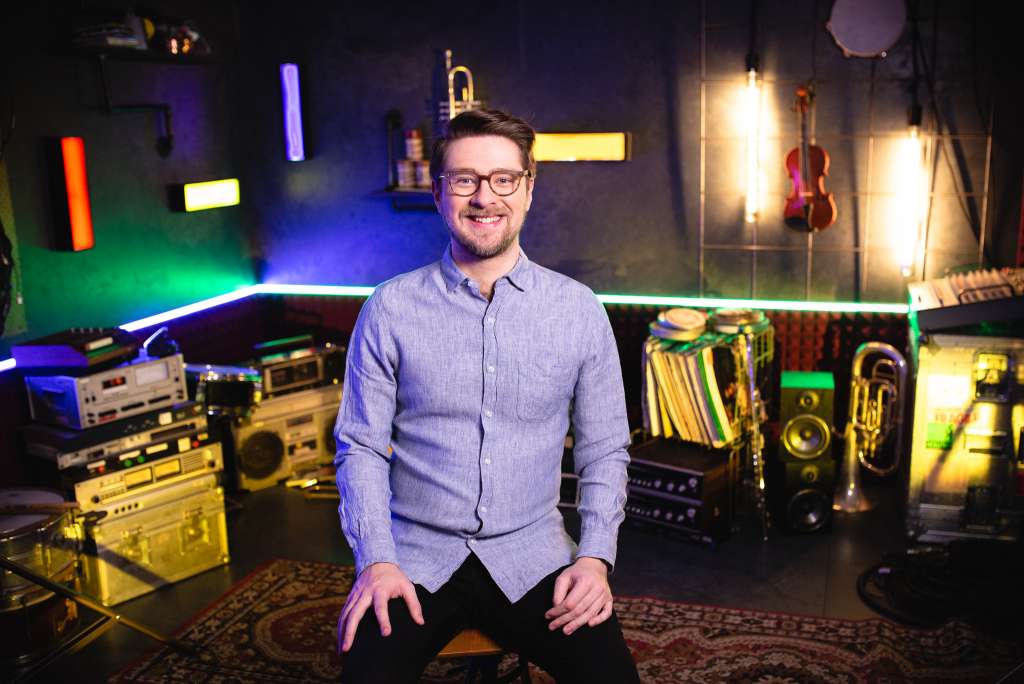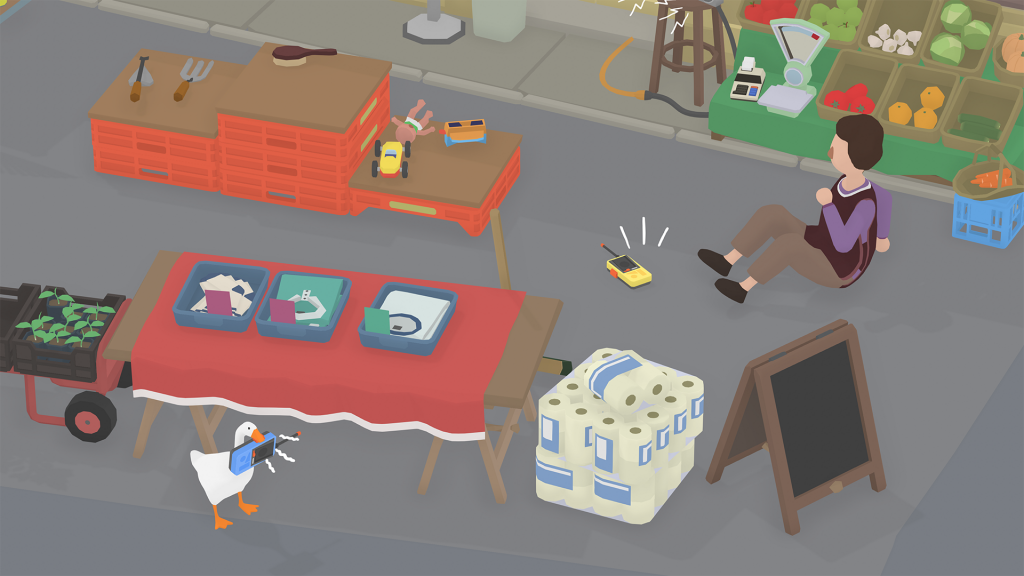“It’s a lovely day in the village, and you are a horrible goose.” The now-iconic video game Untitled Goose Game – in which players take control of a goose whose primary objective is to bother the inhabitants of a small village – became a sensation in late 2019. The game beat Nintendo’s own The Legend of Zelda: Link’s Awakening to the #1 spot on the Nintendo Switch eShop the week it was released, and has since sold over one million copies worldwide.
Untitled Goose Game garnered fans of all ages through its mischievous humour and charm, as well as its unconventional music. The game’s soundtrack consists of a selection of the solo piano Préludes by the French impressionist composer Claude Debussy. Thanks to some innovative design and implementation, these works are performed dynamically in the game – achieving the effect of a live pianist responding to the player’s actions in real time.
Paul Dougherty spoke to the soundtrack’s composer – Melbourne-based Dan Golding – about how he turned the music of Debussy into a dynamic video game soundtrack.
Dan Golding’s soundtrack to Untitled Goose Game is out now to stream, download, and own on vinyl
How did you get your start composing music for video games?
Almost accidentally really. I was running a games event, and we were playing an early version of the game Push Me Pull You by Melbourne developers House House on the big screen in Federation Square. We were just hanging around all day watching people play.
I got into a conversation with House House about what they were going to do for music, and they didn’t really know. This was their first game, so I don’t think they’d really given it a lot of thought.

And the conversation went along the lines of, “Well, this is what I think would work … this is the kind of sound I imagine” and “actually, I think I can do that!”
Push Me Pull You is childish in an intentionally naive sense. I remember at one point telling House House that I was recording with my saxophone – which I bought from eBay for $80 – and part way through recording one of the keys fell off. They were like, “That’s it. That’s the sound of the game”.
Had you ever produced a soundtrack before Push Me Pull You?
I love seeing how instruments work. I’d been playing in various bands since high school and I’m a massive instrument collector. Really just for my own interest and entertainment. I recorded an album in my bedroom when I was eighteen that will never see the light of day, and I’m very happy to keep it that way. I just spent a lot of time fiddling around and experimenting, so I was ready to go by the time I found a more serious outlet.
Since Push Me, Pull You, I’ve done two other games, the Frog Detective games made by Grace Bruxner, and now, Untitled Goose Game.
It must be pretty exciting to have worked on a video game that has achieved such massive global success.
We all knew, I think, that the game was going to be a success – and not just your regular indie release – when the trailer came out. Still, months after the game was released, it’s still hard to fathom how successful it’s been. To win all those “Game of the Year” awards, to briefly beat the new Zelda on the charts. These are things that I still don’t really believe happened.
Why did you decide to use the music of Debussy for the game’s soundtrack?
That idea came from the team at House House. For their first trailer, they were searching for something to go on the radio, because the goose runs off with a radio at one point in the trailer. I think Nico – who works at House House – had been listening just randomly to some Debussy piano music and earmarked one of the Préludes – Minstrels – as having a funny sound to it, and was like, “Oh, we think this might work. Dan, can you do a version of this that might work in the game?”
I looked up some sheet music and was like, “yeah, I think I can do this,” and I put it together in about half a day. That recording was added into the trailer, and that was it, as far as I was concerned. But Jake – who works at House House – has a background as a video editor, and he edited the trailer really, really well with the music. Even now, looking at the trailer, it appears as though the music is reacting to the game.
Then we saw all these comments on YouTube and on social media, “Oh, it’s amazing that the music responds to how you play; I can’t wait for that to happen in the game!” We’re all sitting there going, “Ah, we don’t really know how to do that, but I guess we’ll figure it out now!”
It went from there. What other piano pieces can we include in the game? Are they all going to come from Debussy? Are they all going to come from the Préludes? Are we going to write anything original? How on earth do we make these over 100-year-old pieces of music reactive and dynamic?
What is a dynamic soundtrack?
When you watch an animation – especially one like a Warner Brothers animation who had the incredible Carl Stalling as the composer – it does this thing that we call “Mickey Mousing”. Where the music literally accompanies almost every frame of what is happening on screen. When a character walks upstairs, we hear ascending woodwinds in time with the character’s footsteps.
So, in a video game, there are different types of reactive music – music that reacts to what the player is doing at any given moment. But usually in games it’s not reacting to your actions as quickly as a Warner Brothers cartoon. You might walk into a room, or see an enemy come into view, and the music will transition to a different 30-second track.

With Untitled Goose Game we needed the goose to be able to pick something up and for the music to respond immediately. Second-to-second reactions. We wanted it to feel like there was a pianist in the corner watching what you are doing, and responding in the moment.
Americans say the soundtrack reminds them of (the children’s TV show) Mr. Rogers, and Australians compare it to Play School – because both of these shows had a live pianist on set responding to the actors.
How did you achieve this high-degree of reactivity in the game?
There are two performances of every Prélude on the soundtrack – one version that is similar to how you’d typically hear the music performed, and another which is slower and has lower energy. Both of these performances are chopped up into about 300 to 400 short fragments, each between one and three seconds long, that are queued to trigger in order.
The game then chooses which of the two versions to trigger depending on what the player is doing. And if the player is doing nothing, the soundtrack remains silent.
I had some maths people figure out how many different variations there are of just the first Prélude in the game, and it’s a number with I think 52 zeros after it. Mathematically speaking, every single player is going to hear a different performance every single time.
Has working on the dynamic soundtrack system for Untitled Goose Game sparked your imagination for any other innovations that could be applied to video game music?
Before doing this, I thought of dynamic music as a mystical art that I could never possibly understand. I thought that maybe there were some incredibly complex solutions that everybody else in this space knew about. I think the guy who writes the music for Minecraft tweeted, “Oh wow, what an incredible system. I had no idea you could do music this way!” And I was like, “Well, we didn’t know either. We just figured it out!”
It’s incredible to realize that there are no rules. I think that’s so creatively freeing. It inspires me to do more. I also really hope that other people try and do more dynamic music, and also work to incorporate classical music into video games.
Do you think that we’re at a point where video games have gained mainstream acceptance as an artistic medium?
That is something that I think about a lot. People talk about games as being a young industry, but I’ve never really thought that’s true. Games are much older than I am!
Untitled Goose Game is an interesting example. The four main guys who made the game weren’t trained as game designers. They come from fine arts and film backgrounds, and they’ve used their abilities, interests, and knowledge of popular culture to make a video game.
I think you see Untitled Goose Game resonating with people who wouldn’t typically be interested in video games. It’s a sign that video games are now being treated as just another form of media, alongside music, film, and visual art.
Untitled Goose Game (Original Soundtrack) is out now to stream or download.
